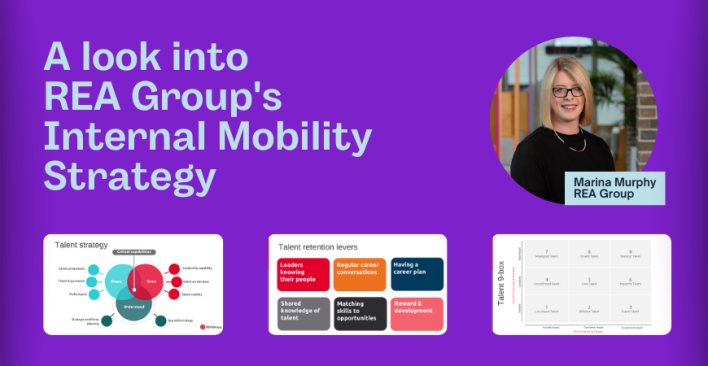Performance Management – The Hub of Your Talent Management Strategy

Talent is at the heart of every successful enterprise, and outstanding workforce performance is critical to organisational success. Without a high performing, highly engaged workforce, it will be difficult or impossible for your organisation to achieve its goals – everything ties into performance. From the initial hiring process through to on-boarding, organisations need to do everything they possibly can to promote and ensure high performance.
In its simplest form, performance management is about rewarding the performance of employees – but it really is much more. Crucially, it is also about the continuous monitoring and development of employee goals to boost workplace engagement. When an ambitious employee has the right motivations and feedback, they will invariably thrive.
A successful performance management strategy can catalyse an organisation’s success and help leaders foresee and surmount challenges. By putting the right people in place, maximising their strengths and planning for future needs, enterprises can empower their most valuable asset – their people. And it’s becoming easier to do so – modern technology provides companies with new opportunities to employ a highly strategic, data-driven approach to workforce administration.
Achieving strategic goals
The primary aim of any talent management initiative should be to accomplish a set of strategic goals, designed to drive the ongoing success and growth of the organisation. By focusing on an individual employee’s performance, and looking at how this is impacting an organisation’s wider performance, better allocation of resources can be determined to meet strategic objectives and priorities. It also means that the organisation is in an advantageous position from the outset, by strategically aligning employee goals with the organisations mission and value proposition.
Management should be encouraging and celebrating employees who are driving the accomplishment of strategic goals management to maintain a streamlined workforce. For example, the performance management strategy could determine a high-performing employee’s success in team leadership and desire to further develop this skill set. Pushing this individual into learning and developing opportunities that equip them with the right skills needed to become an effective leader ensures both the employee and employer are moving in the same strategic direction.
Employee Engagement
According to Deloitte’s 2016 “Global Human Capital Trends Report,” nearly nine in ten executives rated engagement as an important (38 per cent) or very important (48 per cent) priority for their companies. Performance management is a critical component of determining how engaged employees are, and where engagement issues are occurring.
[Tweet “nearly nine in ten #executives rated #engagement as important or very important”]
Using performance management processes can determine which employees are engaged and reaching their potential, and ensure they are provided with the opportunities to grow their skills and continue being valuable members of the organisation. Identifying which employees are not engaged, and working with them to reverse this trend also becomes possible. In addition, actions can be taken against employees who are actively disengaged within the organisation, to prevent further loss of productivity.
Acendre’s recent report on “The Impact of Performance Management Across Talent Management” shows strong employee engagement has a number of critical benefits. These include a 37 per cent reduction in absenteeism, 25 per cent reduction in turnover, and 21 per cent improvement in productivity. Neglecting performance management and enabling disengagement to continue can prove to be detrimental to business success.
Performance management driving the future
Shifting global economic powers, changes in workforce demographics and technological breakthroughs mean companies are increasingly pressured to perform at new levels and solve imperative global concerns. In such a landscape, a sound talent strategy is just as crucial as a well-planned business strategy.
Businesses should be placing emphasis on driving talent strategies that will ultimately lead to reduced costs, increased productivity and stronger employee engagement. People analytics through dashboards and reports can also help managers easily identify high-performing employees and stay on top of potential performance problems.
[Tweet “the best #talent #strategies recruit top candidates, but also drive down #costs”]
Effective performance management requires communication and collaboration on all levels – not only with senior decision makers, but also with line managers and employees. Senior decision makers and C-suite executives must be part of the performance management process, as they determine the strategic direction of the organisation. Their input will ensure that the organisations approach to performance management is aligned with its long-term objectives.
Liaising with these decision makers will enable HR teams to better understand the direction of the organisation and identify the necessary skills for the benefit of the business in the future. Through tailored performance management initiatives, gaps in the workforce can be identified at early stages and filled in a timely manner.
Ultimately, a streamlined performance management strategy that aligns employee performance with organisational goals will deliver exceptional workforce performance and results, while minimising the risk and costs involved in HR processes. Through continuous feedback and coaching, employee performance and engagement will continue to evolve, instilling a culture of high performance.
Images: Shutterstock
This article is sponsored by Acendre
We’re getting close! Join your peers at the largest Talent Acquisition & Management conference on the Southern hemisphere to learn more about the latest trends and pick up useful sourcing tips & strategies. Tickets available here.
Related articles
Leave a Reply
Sign up to our newsletter
Get a weekly digest on the latest in Talent Acquisition.
Deliver this goodness to my inbox!



